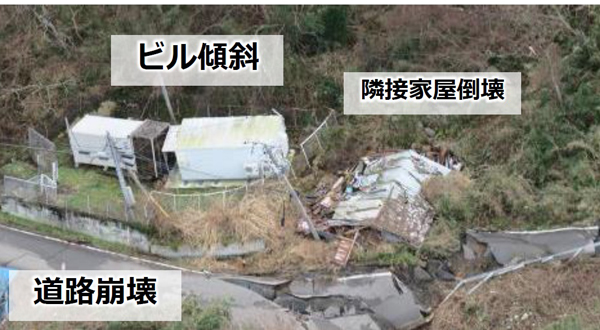The status of communication services during Noto Peninsula earthquake NTT West

NTT West announced its response to the restoration of communications services following Noto Peninsula earthquake.
Noto Peninsula Earthquake caused power outages at telecommunications buildings, damaged relay transmission lines due to landslides, and damaged cables and utility poles for customers and base stations, resulting in a large-scale impact on services.
As an initial response after the disaster occurred, we prioritized the restoration of important lines for the Self-Defense Forces and other organizations, as well as emergency restoration of mobile communications, which are important for disaster victims.
As of January 17, the impact on service at each building level has been reduced due to measures such as securing power and detouring relay routes.
Specifically, after the disaster, services were affected in up to 20 telecommunications buildings, but currently 17 buildings are operating after emergency restoration. In addition, up to 27 buildings suffered power outages, but temporary restoration has been made to 24 buildings. Although cables were damaged in up to 16 sections of the relay transmission line, 13 sections have now been temporarily restored. A total of approximately 4,100 malfunction reports have been received, and approximately 1,200 have been repaired.
Kazuyoshi Katsura, Managing Director, commented, ”We recognize that full-scale restoration will take a certain amount of time as it will coincide with the progress of road clearing”.
In the case of Wajima City, roads have collapsed and are blocked by landslides. The neighboring house has collapsed, and the communications building is also leaning heavily.
Relay cables were also cut off by being caught in the landslide, and conduits were also damaged.
For emergency restoration of telecommunications services, a disaster response headquarters was established on January 1, and supporters from NTT Group companies and telecommunications construction companies are gathered at the site from all over the country, with approximately 800 people working on restoration work every day.
First, mobile power supply vehicles and other vehicles were dispatched to the damaged communications building to restore power. Eleven mobile power supply vehicles and four motor generators were used.
Regarding the relay transmission line, the route was detoured from the affected route to the unaffected route, and the damaged route was repaired to secure the relay transmission line.
As an effort to support disaster victims, portable satellites and satellite mobile phones were deployed at evacuation centers to ensure communication.
After securing important emergency lines such as lines for local government buildings and mobile base stations, we are currently inspecting and understanding damaged cables and utility poles, and proceeding with general restoration.
In response to this recovery, NTT Group collaborated in a variety of ways.
For example, NTT Holdings dispatched personnel to NTT West’s disaster response office to share knowledge from the Great East Japan Earthquake. It also took on the role of coordinating with related ministries and agencies, including technical considerations and verification of emergency restoration. NTT East provided equipment necessary for recovery, including mobile power supply vehicles. Preparations are also underway to provide human support for full-scale recovery.
Managing Director Katsura said, ”By taking aerial photographs of the disaster-stricken areas using helicopters, etc., it is possible to predict the damage situation to some extent, but it is difficult to understand how much restoration work will be required unless you go to the site and see the actual situation. We would like to organize a recovery system while understanding the damage situation as the situation progresses.Not only our communication equipment, but also residents’ homes and other infrastructure have suffered catastrophic damage. “We would like to proceed with the restoration of communication services in line with the reconstruction plan for these areas”.
